Drive Revenue with a Community Built for Commerce
Consumers are busier now than they have ever been (and face more daily distractions and interruptions), but they also have more options than ever. With the use of technology, consumers have access to a nearly endless number of products from thousands of sellers. But given the ease of buying online — being able to use a mobile device from any location to access any good — how can companies stand out from the pack?
One key way is to provide a superior buying experience. Consumers want to personalize their purchases, confident that they’ve properly scouted their options and found the perfect item. Traditionally, companies have used technology, such as SAP Hybris Commerce, to run their ecommerce operations and defeat the competition. But they were looking for more — for a way to give potential and existing customers all the information they need in one place, not only to ensure that the customer had a great buying experience, but that they turned into a loyal advocate of the brand.
SAP worked with organizations to ensure that their customers could access collaborative capabilities throughout the buying journey on their SAP Hybris Commerce storefronts, from product awareness to brand advocacy.
It was this need that led SAP’s social collaboration group to recently develop SAP Jam Communities for SAP Hybris. We built and launched SAP Jam three years ago as an enterprise social network purpose-built for enhancing business processes that affect every employee inside an organization. And nearly 22 million subscribers later, we sought to make these collaborative capabilities available outside the organization and bring public communities into the buying experience via SAP Jam Communities (see Figure 1).
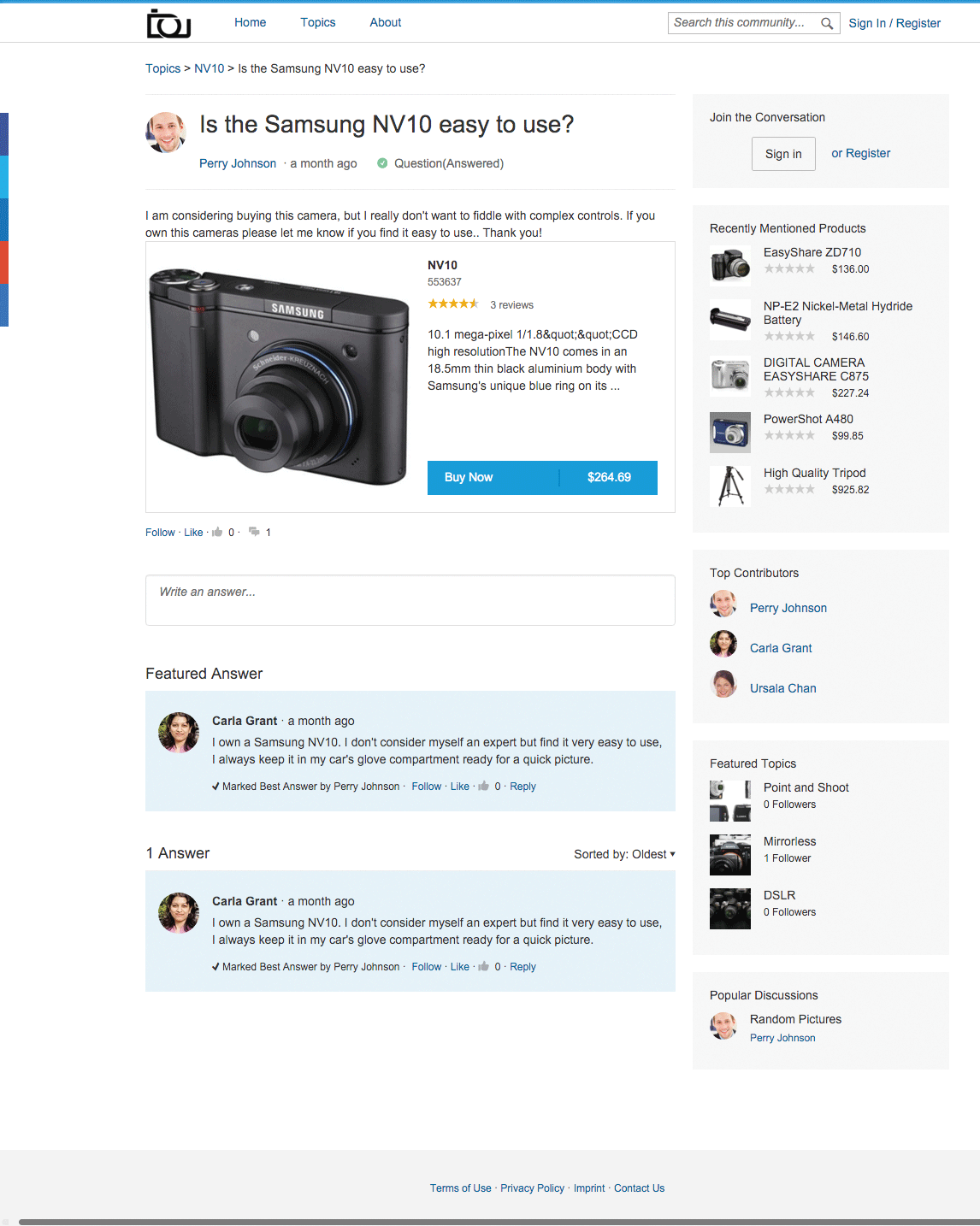
Why incorporate communities into the online shopping experience? Developing this product was a customer-focused effort, as we sought feedback from companies that were using SAP technology to conduct their ecommerce efforts. Companies had told us that their SAP Hybris Commerce-powered online storefronts could benefit from public, online communities, so we worked with these organizations on how to ensure that their customers could access collaborative capabilities throughout their buying journey, from product awareness to brand advocacy.
The problem was that traditional online communities held a lot of information and experiences that would be beneficial in an ecommerce platform — user reviews, questions and answers, and ratings, for example — but were separate from a customer’s buying journey. This resulted in missed opportunities for companies looking to improve customer satisfaction and loyalty, as the customer had to go outside of a company’s website to find a solution to their problem, and wasn’t able to interact directly with the company.
Once we got into the topic of communities, our customers had a lot of questions for us. Four key questions kept popping up:
- How can community content drive organic traffic?
- How can community content successfully drive conversions?
- How can communities help drive sales of complex goods?
- What insights can a community solution built for commerce provide?
Let’s look at the impact communities have on ecommerce.
1. How Can Community Content Drive Organic Traffic?
Most of us can relate to this kind of buying experience: Before you buy, you search online, likely on a mobile phone. At this stage, you’re not yet aware of which products might actually work for your needs — you’re just exploring. When you search, often what comes up first in the results, beyond traditional advertising, is online community content. This is because community content often ranks very well with search engines.
The reasons behind the high ranking in online search results are simple, but powerful, and they have to do with people. People write questions and discuss topics using keywords that an everyday person might use when searching for a product or solution. For example, a search of “What kind of running shoes are best for a person who over-pronates?” might lead to a community conversation about shoes because the search query matches a forum thread title or the language style used in the community. Additionally, insightful and interesting online community content is often shared or reposted to other blog or social media sites, increasing the community page relevancy.
But most of those traditional online community pages end up being dead ends. Consumers don’t have a call to action or an offer for another product that might meet their needs. This represents an opportunity for businesses to provide online community content that allows consumers quick access to ecommerce actions.
With SAP Jam Communities, companies can add key information from their product catalog in SAP Hybris Commerce directly into the community. We made it easy for people to mention specific products available in the catalog, so anyone writing a blog or asking a question can include a mini-card view of a product available for sale in the store (see Figure 2). The product images, description, price, and product code show up in the preview, ensuring consumers have the proper information for the exact model they are researching. And it’s not a static, one-time view of the product. This capability works for all types of content, whether it’s professionally paid blog posts, customer-shared blog posts, questions and answers, or general discussions.
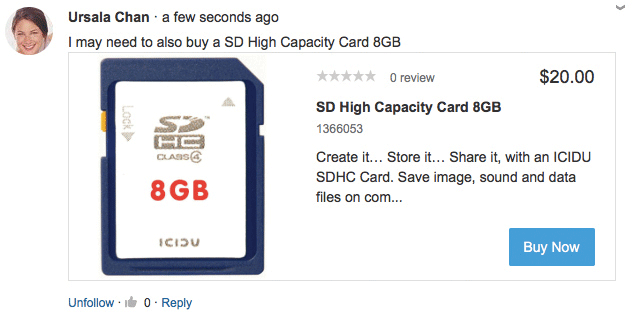
2. How Can Community Content Successfully Drive Conversions?
Our customers shared with us that both the paid and managed content in communities were usually locked into place and not available to syndicate easily in their online customer experiences. We solved this by building SAP Jam Communities on a new, modern, micro-services-based technology architecture that allows companies to syndicate key community content to any of their online customer experiences. We also developed a reference implementation of bringing community content into the product catalog experience, allowing customers who need to see key information — such as reviews, questions and answers, discussions, and blogs — associated with the products they’re considering to purchase.
Online shopping experiences often start on different digital experiences: a product landing page, another consumer social media experience, or a dedicated mobile application for shopping, for example. In each of those cases, online community content can significantly help customers move through their buying journey, as they ultimately become more confident that a particular product is right for them (see Figure 3).
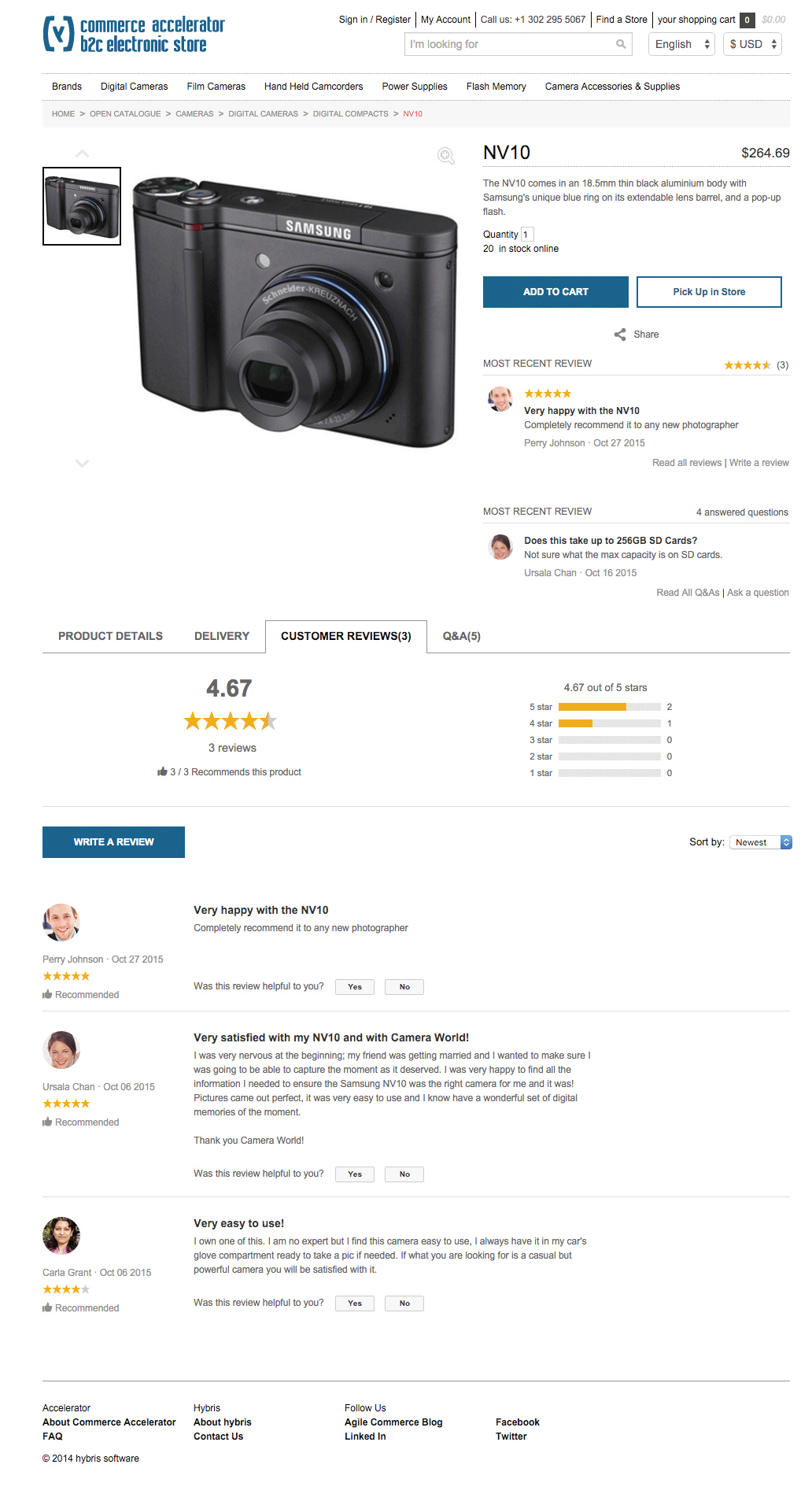
3. How Can Communities Help Drive Sales of Complex Goods?
With smart devices and other software-driven products, many previously “simple” devices have become much more complex for the end consumer. An array of customizations and personalizations make something even as seemingly simple as purchasing a pair of shoes a much more complicated buying experience.
Consumers also face technical challenges in purchasing smart devices and software-driven products that can talk to one another, for example (see Figure 4). They may need to answer a variety of questions, including:
- Does this product support the protocols and standards I need for my particular application?
- Which of these devices works best together in combination with one another?
- What kinds of solutions can I build with a combination of different products being used together?
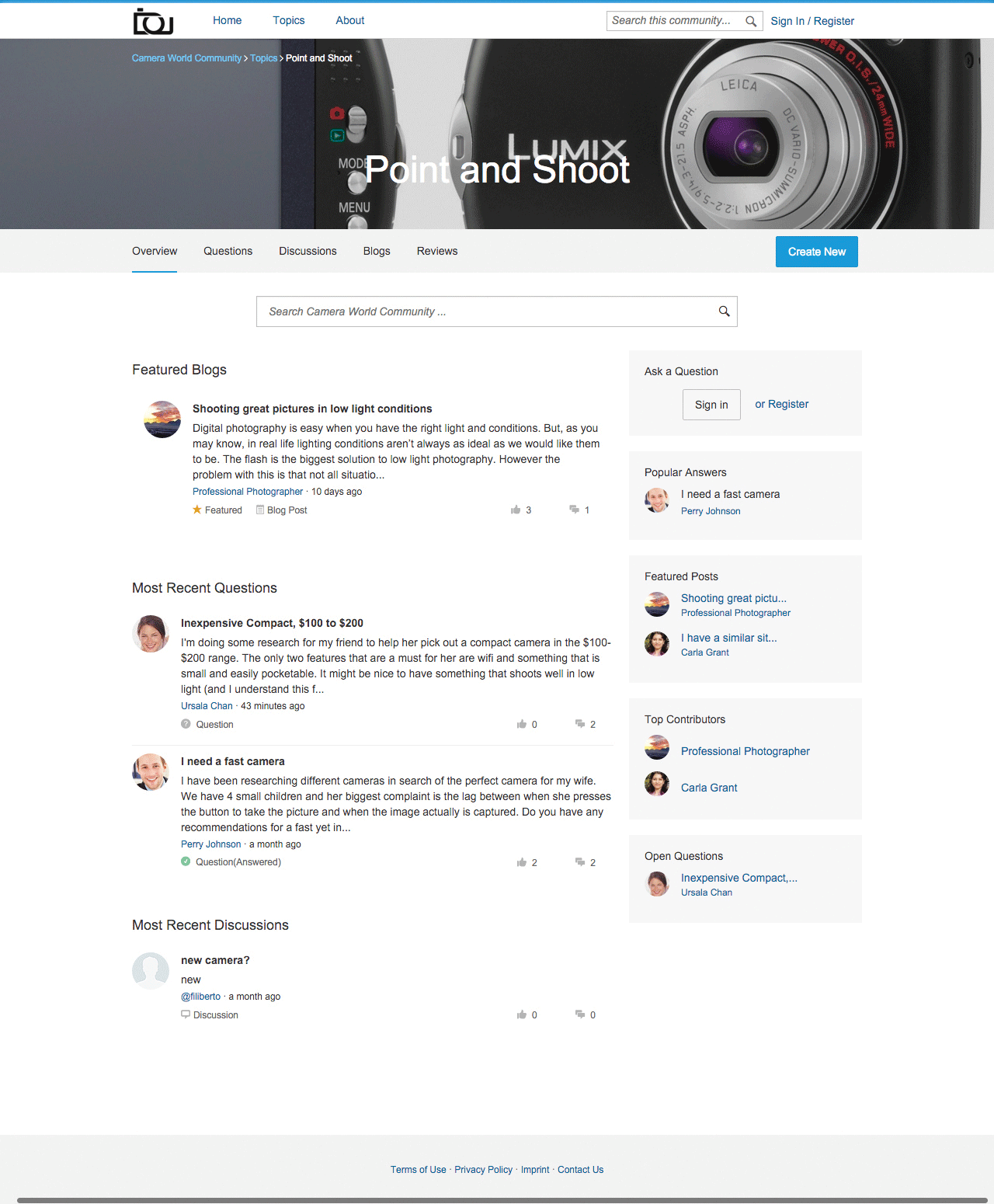
We made sure that we developed the right kinds of collaborative capabilities, such as questions and answers, that supported consumers evaluating a product for purchase, and provided key moderator and extension capabilities so that a question that is unanswered for a period of time can be automatically escalated to a call center representative. This reduces buying anxiety and increases the likelihood of a successful purchase that won’t result in post-sales support issues or product returns.
4. What Insights Can a Community Solution Built for Commerce Provide?
Finally, and perhaps most importantly, our customers told us they wanted to know much more about their end consumers’ buying journey, including:
- What questions were asked before a decision was made?
- How many conversations and interactions did it take to make a final purchase decision?
- Which social content — blogs, reviews, questions — helped influence a purchase?
- Which pieces of paid content actually drove sales?
By being connected with the actual commerce catalog, and knowing exactly which questions relate to which products, SAP Jam Communities provides deeper, more meaningful engagement metrics around what drives successful conversions (see Figure 5). This in turn enables companies to repeat successful transactions and create happy and loyal customers.
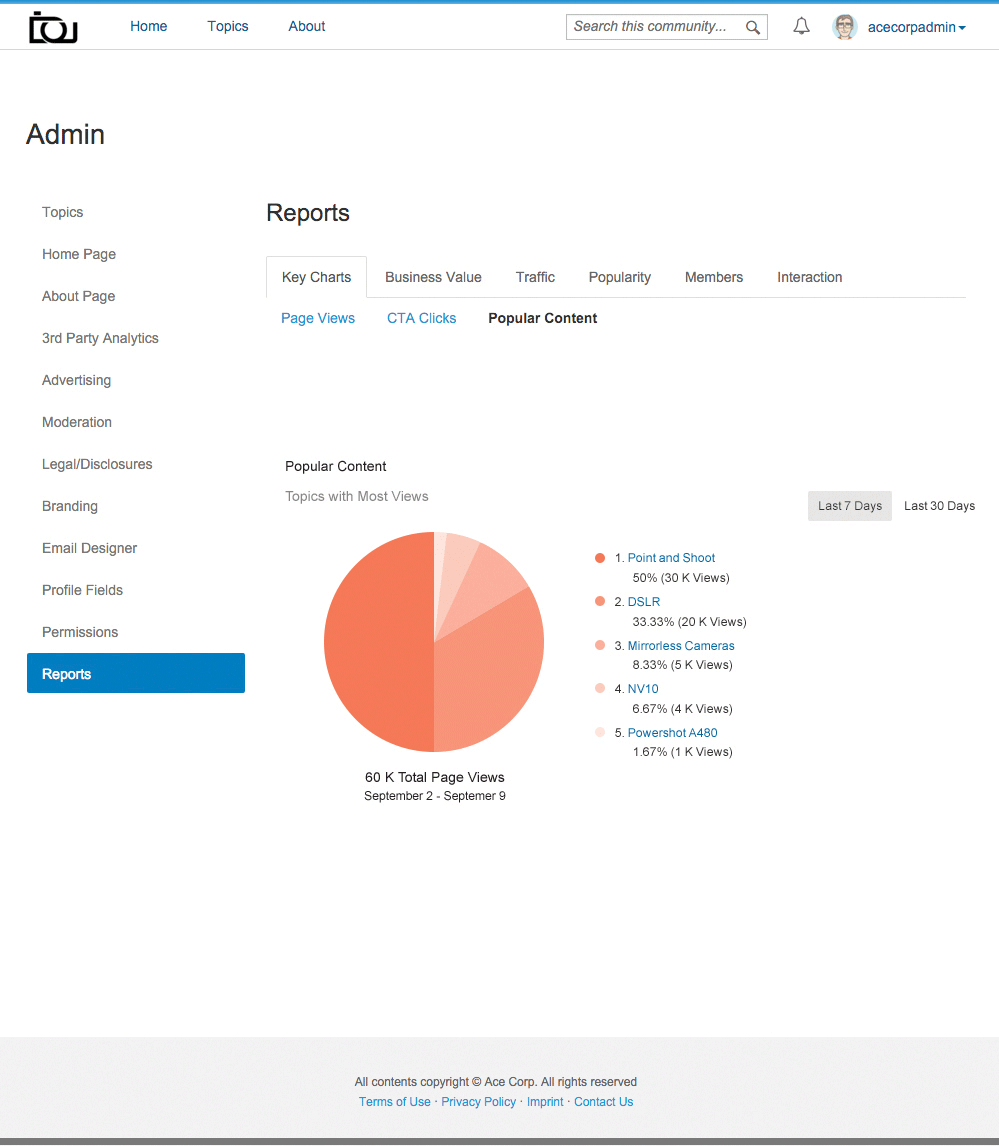
These insights also become the guideposts by which companies can better manage and scale their online communities. Often, they only have engagement metrics that community managers can use to measure results, rather than more robust information that indicates whether the inbound web traffic and click-through actually led to a desired outcome, for example. By connecting precise data about customer discussions and purchasing journeys, SAP Jam Communities provides unparalleled insight into how online communities influence conversions and drive sales.
4. What Insights Can a Community Solution Built for Commerce Provide?
Interactions beginning on a public community powered by SAP Jam Communities can easily transition into a private space powered by our SAP Jam collaboration solution. This opens the possibility of further reducing barriers so companies can build stronger and more successful relationships with their customers.
Just as we’ve found success with SAP Jam for internal employee collaboration by listening to our customers and identifying and solving real-world, everyday business challenges, we intend to continue to do the same with SAP Jam Communities. The evolution of the product will be a direct result of how well we listen to our customers, and how successful we are in executing against a plan to take online communities into the future.
For more information, visit https://go.sap.com/product/content-collaboration/community-powered-commerce.html.





